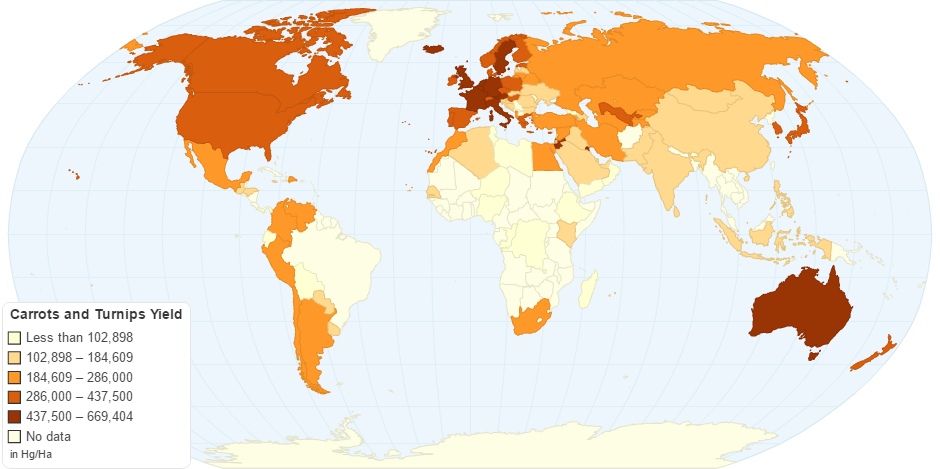This chart shows Carrots and Turnips Yield by Country.
The turnip or white turnip is a root vegetable commonly grown in temperate climates worldwide for its white, bulbous taproot.Small, tender varieties are grown for human consumption, while larger varieties are grown as feed for livestock.
The carrot is a root vegetable, usually orange in colour, though purple, black, red, white, and yellow varieties exist. Carrots are a domesticated form of the wild carrot, Daucus carota, native to Europe and southwestern Asia. The plant probably originated in Persia and originally cultivated for its leaves and seeds. The most commonly eaten part of the plant is the taproot, although the greens are sometimes eaten as well.
The carrot is a biennial plant in the umbellifer family Apiaceae. At first, it grows a rosette of leaves while building up the enlarged taproot. Fast-growing varieties mature within three months of sowing the seed, while slower-maturing varieties are harvested four months later. The roots contain high quantities of alpha- and beta-carotene, and are a good source of vitamin K and vitamin B6, but the belief that eating carrots improves night vision is a myth put forward by the British in World War II to mislead the enemy about their military capabilities.
The turnip's root is high in vitamin C. The green leaves of the turnip top are a good source of vitamin A, folate, vitamin C, vitamin K and calcium. Turnip greens are also high in lutein.
9 years ago

